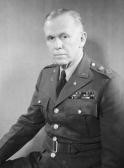One of the advantages of not having anything useful to do is that I have time to read. Here are a couple of books that I read this past year, or within a year or two, that I found particularly illuminating, informative, or otherwise notable. I highly recommend them.
Death of Expertise – by Tom Nichols
America today is increasingly, “obsessed with the worship of its own ignorance,” writes Naval War College professor Tom Nichols. “Never have so many people had so much access to so much knowledge and yet have been so resistant to learning anything.”
Nichols notes that there has always been an undercurrent of anti-intellectualism in American life, but today that undercurrent is a growing flood, sweeping away respect for science and rationality and threatening the relationship between experts and citizens, which is crucial to the health of our democracy.
Good Kids, Bad City – by Kyle Swenson
The criminal justice system is not self-correcting. Errors happen and some people spend many decades in prison for crimes they did not commit.
This book tells the story of three young black men, wrongly imprisoned for decades for a murder they didn’t commit. Swenson, who is now a reporter for the Washington Post, was formerly a reporter for a weekly newspaper in Cleveland. During that time, he covered the story of three men who were falsely convicted of the murder of a white man and served more than 30 years in prison before being exonerated and released when a key witness recanted his earlier testimony. Like any other disaster, the wrongful convictions were the result of a chain of errors, accidents, malfeasance, and carelessness on the part of numerous people and organizations – among them in this case, the police, the news media, the prosecutor, the defense attorneys, and the trial judge.
The most chilling aspect of the story is that the three were originally sentenced to death, but only a Supreme Court decision that led Ohio to temporarily halt executions saved their lives.
The Hidden Life of Trees – by Peter Wohlleben
While trees appear silently impassive, they actually communicate and cooperate with other trees and respond to changes in their environment in real time, according to German forester Wohlleben in this best-selling book. Wohlleben relates the findings of numerous researchers who have found evidence that trees are active participants in a dynamic social network that we are only now beginning to understand. While Wohlleben’s book has been criticized by some naturalists for its “oversimplified and emotional” language, his relating of the current science is largely accurate. Readers of this book might think twice before ever again hammering a nail into the living wood of a tree.
Hiding in Plain Sight – by Sarah Kendzior
Kendzior is a researcher who spent years studying dictatorships in the former Soviet Union, where she observed the cooperative efforts of autocratic governments and criminal syndicates intent on looting their countries. Her book describes the Trump administration’s efforts to follow a similar path.
“In 2015,” she writes, “I predicted that Donald Trump would win the presidential election, and once installed, he would decimate American democracy.”
In her words, “The Trump administration is a transnational crime syndicate masquerading as a government, with operatives all over the world.”
Warriors Don’t Cry – by Melba Patillo
Melba Patillo was one of the nine black students that integrated Little Rock’s Central High School in 1957. Their story is best known for President Dwight Eisenhower’s deployment of the 101st Airborne Division to enforce the court-ordered desegregation order. But less well-known are the details of the sustained year-long campaign of harassment and verbal and physical abuse that dozens of white students – actively supported by their parents, community members and some educators and tolerated by nearly everyone else – conducted against the nine beleaguered students. Patillo’s book describes in detail the harrowing year that the nine students endured.
The New World of Police Accountability (Third edition) – by Samuel E. Walker and Carol A. Archbold
It’s not a few bad apples. American law enforcement is structurally, historically, and culturally broken, and real reform will require fundamental changes to police organizations, practices, and culture. That’s the message of Samuel Walker and Carol Archbold, professors who have studied, written about, and consulted with American law enforcement agencies for decades.
Walker and Archbold present a compelling and, frankly, somewhat discouraging perspective on the challenges facing American police agencies today. While not written for a general audience, the book accurately describes the current state of American law enforcement and the need for significant reform.
Social Media
And if you don’t have time to read books, here are a couple of folks whose work on various social media platforms will always be worth your time: Political Historian Heather Cox Richardson and Retired US Navy Chief Warrant Officer and political commentator Jim Wright
January 2, 2021









